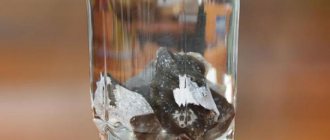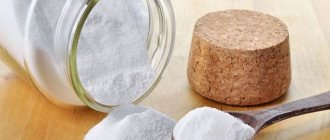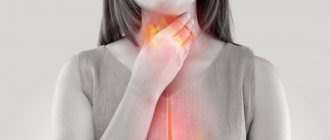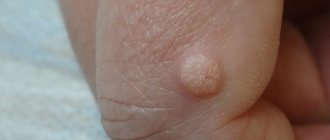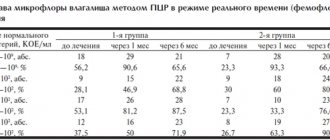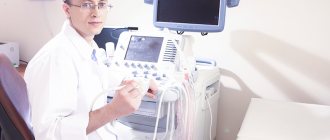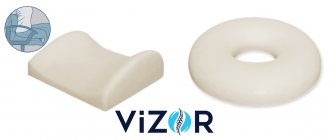Useful tips
Watch the video if you are too lazy to read
Watch the video if you are too lazy to read
Why is it so important to brush your teeth?
Many people know that brushing your teeth twice a day is important for oral health. However, few people know why this is important.
Fresh breath
It is clear that the accumulation of food debris and the subsequent development of bacteria in the mouth will lead to bad breath.
Preventing bacteria with regular brushing is the key to maintaining fresh breath and preventing halitosis
Other steps you can take to prevent food from getting into your brush include drinking water and chewing sugar-free gum.
Preventing gum disease
Eating harmful foods, not visiting the dentist on time, and sometimes just the characteristics of the body can cause plaque if you don’t brush your teeth.
Everyone develops plaque on their teeth to some degree, and it's often caused by leftover food. This food deposit leads to bacteria and hardening. It is a white or yellowish substance between the teeth and at the gum line.
Bacteria in plaque irritate the gums and cause them to become inflamed and bleed when brushing. The first stage of gum disease is called gingivitis.
Brushing your teeth regularly will help prevent gum disease by preventing plaque from forming.
Removing stains on teeth
Investing in a quality toothpaste and using it twice a day will help prevent plaque buildup and unwanted breath.
If you have stains on your teeth, a low abrasive toothpaste is a great solution. Not only will it help eliminate bad breath and protect teeth and gums from bacteria, but it will also gently remove stains caused by coffee and red wine.
Brushing your teeth may help prevent dementia
Research has shown that patients with gum disease are more likely to suffer from dementia.
A study conducted by Chung Shan Medical University and the National Defense Medical Center, which was published in the scientific journal Alzheimer's Research and Therapy, found that people who had chronic periodontitis for 10 years or more had a 70% higher risk of developing Alzheimer's disease
than in people without chronic periodontitis.
Gum disease and pregnancy
Not only can gum disease affect fertility, it can also have a negative impact on babies in the womb. Women with periodontitis had an increased likelihood that their babies would be born prematurely and be underweight.
When you are pregnant, everything you ingest will be passed on to the baby, so drinking alcohol and drinking too much caffeine are not recommended for pregnant women.
When you don't brush your teeth, the bacteria in your mouth enters your bloodstream, which is also your baby's bloodstream. It is very important to pay close attention to oral hygiene during pregnancy.
Reduces the likelihood of serious illness
- Bacteria that form in dental plaque
, can not only penetrate the bloodstream and
affect the fetus in the uterus
, but also increase the likelihood of the formation of bad cholesterol. - Gum disease is often associated with atherosclerosis, which is accompanied by cholesterol deposition
. When these deposits accumulate, a heart attack or stroke can occur. Therefore, it is very important to prevent plaque from forming, especially if you are over 50 years old.
How to brush your teeth correctly
The main mistake many people make is that they brush their teeth with linear movements from right to left, and by doing so they simply push plaque into the spaces between the teeth. It is recommended to brush the front teeth using up and down movements with some nuances.
It is also worth noting that many people brush their teeth immediately after eating. However, it is at this time that tooth enamel is most vulnerable. It is recommended to brush your teeth 30 minutes after eating
.
Here are a few rules you should remember:
1.
The brushing procedure itself should take about 3 minutes.
2.
The toothbrush should be held at an angle of 45 degrees relative to the teeth.
3.
Brushing should begin with the front teeth, after which you should slowly move towards the back teeth.
4.
When brushing your lower teeth, you should move the brush from bottom to top.
5.
When brushing the upper teeth, the movements should be from top to bottom.
6.
Using circular and simultaneous raking movements, you should clean the chewing surface of your teeth.
7.
It’s a good idea to clean molars—hard-to-reach molars.
8.
After brushing your teeth, spit out the toothpaste or rinse your mouth with a small amount of water. This must be done in such a way as not to wash off all the paste from the teeth. Otherwise, you risk washing away all the fluoride, which means it will not be able to have a beneficial effect on your teeth.
9.
After brushing, you should clean your tongue using the bristles of a toothbrush.
10.
It is better to use a soft toothbrush to brush your teeth. Its size and shape should be such that you can easily reach any tooth and easily clean it.
* Replace your brush every three months, or more often if it has lost its shape.
To be beneficial, brushing your teeth must be done every day. Most people finish their oral brushing routine too quickly. In a short time, you may remove the remaining food, but the plaque will remain, and this, in turn, can lead to the development of caries, as well as gum disease.
Try to sometimes change the side on which you start brushing your teeth. You can start brushing your teeth on the right side, and another time start the process from the lower jaw. This way you will begin to be more attentive to this process.
Brush your teeth once in the morning and once in the evening.
How often should you change your brush?
The oral cavity is one of the most microorganism-populated places in the human body, and no matter how thoroughly you clean your toothbrush after each use, it is impossible to completely clean it, so gradually the microbial contamination of the brush grows, at the same time the bristles wear out and become deformed, and its cleaning properties deteriorate. Therefore, the toothbrush must be replaced regularly.
Dentists recommend changing your toothbrush at least once every three months. In the presence of periodontal disease, the brush is changed more often. Some brushes have colored bristle indicators, which make it easier to control the timely replacement of the brush. It is also recommended to change your toothbrush after suffering from viral, infectious and so-called colds. The brushes that you take with you on the road should also be thrown away upon arrival. You need to store the brush with the bristles up, in an open place, and first rinse and clean it thoroughly.
How to brush your teeth (video)
Of course, brushing your teeth is only part of a complete dental care routine. You should also:
1.
Clean the cavities between the teeth, as this is where bacteria accumulate and develop. In some places the brush simply does not reach. Brushing between teeth should be done once a day to help remove plaque and food particles from between the teeth and under the gums.
2.
Eat healthily by limiting your intake of sweets and snacks.
3.
Visit the dentist regularly to prevent and treat oral diseases
How long should you brush your teeth?
In short, that's about 1,896 hours over a lifetime, but research shows that people actually brush their teeth for about half of that time.
Dentists recommend brushing your teeth for at least 2 minutes, 30 seconds for each half of the upper and lower jaw, at least 2 times a day.
The toothpaste you use must contain fluoride to strengthen your teeth against the ravages of tooth decay.
We brush our teeth if they have braces.
If you have braces, then you should brush your teeth even more often than just 2 times a day, and more specifically after each meal.
* A wearer of braces should cut food finely, especially apples and other hard foods.
* Refrain from eating soft candy, popcorn and other snacks and sweets that tend to get stuck in the teeth.
Moreover, in this case it is not easy to clean your teeth from plaque, which means it is advisable for you to purchase:
- a special orthodontic brush equipped with V-shaped bristles
- special fluoride toothpaste
- special brushes
- irrigator
- mouth rinse
* It wouldn't hurt to get some dental floss.
Here's how to clean:
1.
Use a toothbrush to remove plaque from the surface of your teeth. In this case, it is recommended to spend at least 10 seconds on each tooth.
2.
Treat your braces with special brushes. The space under the braces should also be treated.
3.
The floss will help get rid of food debris between the teeth.
4.
Other hard-to-reach places should be cleaned using an irrigator.
5.
Finally, you can rinse your mouth with a special mouthwash.
Additional recommendations
When brushing, you should not put too much pressure on the brush, especially if you use a brush with medium or maximum hardness bristles - this can lead to damage to the mucous membranes and enamel, and even to the development of a serious pathology - wedge-shaped tooth defect. You should not use too much toothpaste.
To check the quality of cleaning, run your tongue over your teeth: they should be perfectly smooth, without the slightest roughness. You can also purchase staining tablets at the pharmacy that will help identify poorly cleaned areas of tooth enamel.
In addition, it is necessary to pay sufficient attention to the choice of toothbrush and toothpaste. These are two of the best tools for cleaning your teeth and mouth from food debris and harmful bacteria.
It must be remembered that replacing a toothbrush must occur in a timely manner - at least once every 3 months, otherwise a worn-out product with bristles damaged over time will not cope with its task effectively enough.
Don't use chewing gum as a substitute for brushing. Despite the proven benefits of this process, chewing gum cannot completely replace mechanical cleansing, in addition, it is significantly less effective in combating bacteria.
If you use a shared bathroom, use a special case, not a cup holder, to store brushes, since when you flush the toilet, bacteria spread within a radius of 2 meters and can land on the brush.
We hope that our recommendations for brushing your teeth will be useful to you and that your teeth will always delight you with whiteness. And so that their cleaning is more effective. Try Asepta PLUS Remineralization professional toothpaste. This unique product restores tooth enamel, reduces the sensitivity of teeth and gums and accelerates the regeneration of the oral mucosa.
Brush your teeth with the right brush
One common mistake is that people buy either a brush that is too soft or too hard.
In addition, some people buy either a brush that is too large or, conversely, too small, which also affects the quality of teeth cleaning.
How to choose a toothbrush?
The UK Ministry of Health recommends purchasing a toothbrush with a small head and not very long bristles, attached at an angle. In addition, it is desirable that the brush be equipped with rounded ends.
The bristles can be either soft or medium-hard, which is what works best for most people.
Here are a few simple rules for choosing a toothbrush:
1.
If you have healthy gums, then you can safely use a medium-hard toothbrush.
* Try to use brushes that have a long handle and rubber parts on it so that your hand does not slip and you can adjust the pressure.
* If you have problems with your gums or tooth enamel, it is better to use soft brushes. This also applies to children under 12 years of age, even if they have healthy teeth and gums.
2.
According to experts, the length of the toothbrush head can vary between 2 and 3 cm, its height should not exceed 2 cm, and its width should be about 1.5 cm.
* Try to use a multi-tuft brush, that is, a toothbrush consisting of individual tufts and bristles, and preferably with curves at the end of these tufts.
* As mentioned, use one brush for no longer than 3 months, and it’s better to change a soft toothbrush every 2 months
What is proper oral hygiene
The goal of proper personal oral hygiene is to make your teeth healthier, your breath fresh and pleasant, and to prevent bleeding gums and the formation of yellow plaque. As a result of proper care, your smile will become attractive and snow-white, and the main result is the prevention of dental diseases.
Proper nutrition is also very important. For example, apples strengthen enamel.
There are several indicators of proper and effective oral hygiene:
- clean teeth without stuck pieces of food;
- pink gums that do not hurt or bleed when brushing;
- no bad breath;
- There is no pain when chewing food.
If the condition of your teeth does not correspond to at least one of these signs, you need to contact your dentist. If necessary, he will provide treatment and give advice on oral care, recommend suitable toothbrushes and pastes, and point out problem areas.
Which brush is better: regular or electric?
In fact, it doesn't matter what kind of brush you use: regular or electric. Both types clean equally well as long as you use a good fluoride toothpaste, use proper brush strokes, and brush twice a day.
However, some people find it much more convenient to use an electric toothbrush to deep clean their teeth.
It's also worth noting that some experts believe that an electric toothbrush can clean between teeth better.
The type of brush you choose is entirely up to you. But it is worth mentioning that an electric brush is more suitable for people with hand and shoulder conditions, such as arthritis.
Children over three years old can already use an electric toothbrush.
Remember, if you brush your teeth correctly, it doesn’t matter what type of brush you use.
Regularity is the key to effectiveness
Cleaning is of utmost importance. This hygiene procedure must be carried out regularly.
Moreover, if you perform care only once a day in the morning or evening, it will not be possible to eliminate the harmful effects of microorganisms. They actively multiply on the remains of consumed food and have an extremely negative effect on the condition of dental elements.
Without proper oral care, plaque appears, which gradually hardens and becomes tartar. Stone formations put pressure on the gum tissue, provoking the occurrence of an inflammatory process.
In addition, neglect of the rules of oral hygiene causes caries. This disease is fraught with serious consequences. In addition to pain, unpleasant odor and dental problems, various pathologies can develop in the human body. Since the rapid growth of the number of bacteria on damaged elements leads to their spread to internal organs. Because of this, numerous diseases appear.
To avoid such developments, it is necessary to clean the plates daily (2 times a day). You need to devote a sufficient amount of time to this process. Do not forget that neglect of your own health is unacceptable.
What toothpaste should I use to brush my teeth?
Choose fluoride toothpaste. For adults, it is advisable to use a paste that contains 1350–1500 ppm fluoride.
It is worth noting that children can also use this paste, but children under three years old should use very little paste, and children under six years old should not exceed the volume of a pea.
If the child does not suffer from caries, he can purchase children's toothpaste with a low fluoride content (1000 ppm).
In any case, it is worth consulting with a dentist, who can tell you which toothpaste is best for you and your child.
Should I use mouthwash?
Using a mouthwash that contains fluoride can help prevent tooth decay. However, you should not use mouthwash—even fluoride—right after brushing your teeth, otherwise it will wash away the concentrated fluoride from the toothpaste that remains on your teeth. Choose a different time to use mouthwash, such as after lunch. It is advised not to eat or drink for 30 minutes after using mouthwash.
Preventing dental caries: conclusions
In this article we tried to give answers to the questions: how to get rid of caries, how to prevent caries, how to defeat caries, is there any salvation from caries... Let us repeat that there is the following algorithm for effective prevention of caries:
- Firstly , measures aimed at removing soft plaque and tartar. This is nothing more than oral hygiene. It should be noted that good hygiene is the best cure for caries.
- Secondly , a rational diet that limits the use of easily digestible carbohydrates (found in sweets, flour, and sugary drinks) between main meals and teaching your children to do this is also an excellent remedy for caries.
- Thirdly , these are measures aimed at increasing the resistance of tooth enamel to the destructive effects of organic acids produced by cariogenic microorganisms in the oral cavity.
This includes the use of toothpastes with calcium and fluoride at home, as well as periodic visits to the dentist once every 3-6 months (the frequency depends on the growth rate of new caries lesions). Also, preventive actions include sealing the fissures of teeth in children, in which deep fissures (grooves) on the chewing surfaces of the teeth are sealed with liquid filling materials. We hope that our article on the topic: How to prevent dental caries, effective caries prevention - turned out to be useful to you!
Sources:
1. Higher professional education of the author in dentistry, 2. Based on personal experience as a periodontist, 3. The European Academy of Paediatric Dentistry (USA), 4. National Library of Medicine (USA), 5. “Therapeutic dentistry. Textbook" (Borovsky E.), 6. "Pediatric therapeutic dentistry. National leadership" (Leontyev V.).
Brush your teeth after eating
Many people have developed the habit of snacking, quickly brushing their teeth afterward, and continuing with their business.
However, this approach harms the teeth and does not protect them in any way.
Experts advise brushing your teeth 30-60 minutes after eating.
The fact is that our teeth are protected from bacteria or acid, and by brushing our teeth immediately after eating, we destroy this protection. This can mean that it only takes one bacteria to get inside a tooth to cause more damage than a million bacteria.
Dentists also recommend brushing your teeth in the morning before eating, and in the evening before going to bed. They also advise using dental floss, but we will talk about this in more detail below.
When is the best time to brush your teeth: before or after breakfast?
So far, there hasn't been enough research around the world to indicate the best time to brush your teeth.
* Some dentists recommend waiting a while after breakfast to remove food debris between the teeth and not harm the enamel.
* But there are also those who claim that you need to brush your teeth before breakfast. This is necessary in order to clean the tongue, as well as tooth enamel, from bacterial plaque. If you do not brush your teeth before breakfast, you will swallow food along with plaque, which means that there is a risk of harming the gastrointestinal tract.
* You can take the golden mean - brush your teeth before breakfast, and after it simply rinse your mouth with water or saline solution.
The main thing is to brush your teeth in the morning and evening before going to bed so that food stuck after eating does not harm your teeth.
How to properly brush children's teeth
There is an opinion among parents that children’s baby teeth should not be taken care of, because sooner or later they will fall out and new ones will grow in their place.
This is a misconception, and a child’s teeth need to be brushed, even baby teeth.
Baby teeth also have enamel, but it is quite weak, and caries can affect it very quickly. It is worth noting that caries in children is also associated with nutrition. Even if your baby is not yet breastfed, breast milk and formula contain sugar.
Child brushing teeth
If children's teeth have been affected by caries, there is a high risk of developing an infection that can affect not only the teeth, but also other parts of the body. Such infections can cause tonsillitis and even pyelonephritis.
There are practically no children who would be happy to see a dentist. And if caries starts, toothache will begin, and the child will not be able to chew food normally.
The worst-case scenario is tooth extraction, but according to experts, removing a baby tooth prematurely can harm the process of bite formation. In addition, removal of a baby tooth can cause speech impediment, as well as crooked permanent teeth.
All these arguments indicate that baby teeth need to be well looked after.
When should you start brushing your teeth?
It is difficult to name the exact age at which you should start brushing and caring for your teeth. The reason is simple – you should start caring for your teeth as soon as they appear, and each person’s teeth grow differently.
As a rule, a person’s very first tooth appears at the age of six months, but it often happens that for some this period comes earlier, and for others even within a year.
When the first tooth erupts, the local immunity of the oral cavity begins to decrease, which means the risk of developing an infection increases if you do not carefully start brushing the tooth. In addition, a small wound will form around the emerging tooth, and the child will experience extremely unpleasant sensations during brushing.
Before teeth appear
1.
According to some experts, it is worth starting to take care of your oral cavity before your teeth have even erupted. The fact is that even when there are no teeth, there are accumulations of microorganisms on the mucous membrane that can cause unpleasant diseases, including stomatitis and gingivitis.
2.
If you start taking care of your oral cavity at an early age, this will instill in your child the habit of hygiene, which means the toothbrush will not turn into an enemy.
3.
Some dentists advise taking care of your gums at 3-4 months, that is, approximately 2-3 months before the first tooth erupts.
The importance of proper oral care
The need to take care of your oral cavity is obvious. The purpose of hygiene procedures is, first of all, the prevention of caries, periodontal disease and other diseases that can lead to tooth loss. Irregularity of procedures leads to the fact that plaque remains on the surface of the enamel, and food debris accumulates in the gaps, which rot and create a comfortable environment for the proliferation of pathogenic bacteria. As a result, bad breath appears and gum disease develops.
If plaque remains on the teeth for a long time, it mineralizes and turns into tartar, which cannot be removed at home. The stone causes deformation and thinning of tooth enamel, making it more sensitive and painful.
But proper oral hygiene is important for more than just dental health. According to doctors, there are more than 60 diseases that are directly or indirectly the result of dental problems. Among them:
- diseases of the cardiovascular system;
- rheumatism;
- digestive problems;
- kidney disease;
- skin rashes;
- nervous disorders.
Therefore, systematic and competent hygiene of teeth and gums is important for the overall health of the body.
Cleaning teeth with dental floss
Dental floss was created to help clean spaces in teeth that a toothbrush simply cannot reach. It is believed that by cleaning the spaces between the teeth, we prevent the formation of tartar and also significantly strengthen our gums.
Here are some recommendations:
1.
For good cleaning, you need to take at least 20 cm of thread, and preferably longer (30-40 cm).
2.
Wrap the edges of the thread around your index or middle fingers.
3.
Grasp the dental floss using the thumb and index finger of each hand. You should end up with about 3-5cm of loose thread.
4.
You need to tighten the floss and start cleaning between your teeth.
5.
Move the floss in a gentle up and down motion, touching your teeth.
*Treat each tooth in this manner from all sides.
* It is not recommended to “saw” with dental floss, as there is a risk of injury to the gums.
*You should first floss your teeth and only then use a brush.
In the US, the Department of Health has decided to no longer recommend flossing.
The fact is that scientists have not been able to study how effective it is to use dental floss.
In an attempt to find out how this happened, journalists studied many works written over the past 10 years.
Few scientific studies were found that, at best, compared the effect obtained from using toothpaste with the effect obtained from using toothpaste and floss.
Scientists, as it turned out, found rather weak evidence in favor of flossing, and the results themselves were based on rather controversial research methodology.
* For example, the duration of one of the experiments was only two weeks, although caries simply cannot develop in such a short period of time under any circumstances.
* In another experiment, only 25 subjects were given dental floss to brush their teeth, and then only once, which, of course, was not enough to measure any changes.
*It's also worth noting that some of these studies were funded by dental floss manufacturers
Is it possible to brush your teeth with soda?
Oral cavity
Baking soda is an antiseptic that can disinfect the mouth when needed. Soda solution is usually used as an antiseptic and antifungal agent.
The fact is that a solution of soda creates an alkaline environment in the oral cavity, which is extremely unfavorable for bacteria.
Rinsing your mouth with baking soda is safe and healthy, as it not only prevents bacteria from developing, but also helps get rid of unpleasant odor.
Teeth
But brushing your teeth with soda cannot be called safe. Yes, soda cleans teeth, but this happens because it has abrasive properties. This means that its small particles simply remove plaque along with the top layer of tooth enamel.
Negative effects of soda
1.
It is the abrasive properties of soda that can lead to injury to the gums, which can become bleeding.
2.
Often, after using baking soda to brush your teeth, rashes appear around your mouth, which are actually an allergic reaction.
How to Reduce Damage from Soda
1.
You should brush your teeth with soda no more than once every 10 days.
2.
When cleaning with a soda solution, use only a soft-bristled brush, a cotton swab, or, as a last resort, your finger.
3. After cleansing, you should not eat hot or cold food for a couple of hours.
* If you use this procedure and feel pain while eating hot or cold food, immediately stop using baking soda to brush your teeth.
* To keep your tooth enamel healthy, use only fluoride-containing toothpastes enriched with minerals.
* You can also use a fluoride rinse to strengthen the enamel.
* If you decide to brush your teeth with a soda solution to whiten your teeth, you should eat foods that contain calcium (nuts, dairy products, garlic, parsley, parmesan)
Professional dental treatment with fluoride –
At the beginning of the article, we already told you that the initial stage of caries develops due to exposure to acid secreted by cariogenic bacteria. This acid dissolves the surface layer of enamel - as a result of which the enamel loses calcium, i.e. demineralization of the enamel occurs. However, there are therapeutic measures that can strengthen tooth enamel by saturating it with minerals (fluorine and calcium). This process is called tooth remineralization.
Remineralization is not only professional (carried out in a dental office), but it can also be easily done independently using the right quality products. At home, you constantly use toothpastes with fluoride or calcium, which also contribute to the remineralization of tooth enamel, despite moderate concentrations of active ingredients. To strengthen enamel in children and adults, dentists most often use the method of professional fluoridation of teeth (using highly concentrated varnishes and gels).
Professional fluoridation of teeth is more effective compared to fluoride-containing therapeutic and prophylactic toothpastes. For example, the fluoride concentration in dental varnish is usually 22,600 ppm, and conventional dental toothpastes contain a maximum of 1,450 ppm of fluoride. And in Colgate® Duraphat medicinal pastes (which we described above) – 2800 or 5000 ppm.
In what cases is it better to choose fluoride treatment of teeth at the dentist, and in what cases is it better to use medicated toothpastes with a high dosage of fluoride at home? Read the article on fluoridation of teeth (see link above). But in general, the recommendations of the World Health Organization (WHO) recommend that fluoride prevention of caries should include both directions: firstly, the constant use of low doses of fluorides at home, and secondly, periodic professional applications of high doses of fluorides at the dentist (1 time in 3- 6 months).
The mechanism of action of fluorides (explanations below the picture) –
- Demineralization - when the pH of the oral fluid drops to pH 5.5 (i.e. becomes acidic) - the surface layer of enamel begins to dissolve and lose calcium and other trace elements. This is the starting point for the development of caries. A pH below 5.5 means an acidic environment, which is formed in the oral cavity under the influence of cariogenic microorganisms that “digest” food debris into organic acids.
- Remineralization - the surface of the tooth is coated with fluoride varnish, which promotes the formation of a layer of calcium fluoride (CaF2) on the surface of the tooth, from which calcium and fluoride ions penetrate into the enamel surface. There, fluoride ions bind to hydroxyapatite (the substance from which enamel is made), turning it into fluorohydroxyapatite. The latter is much more resistant to acid, and its dissolution begins only at pH 4.5 (i.e. at a higher acid concentration in the oral cavity). This ensures the anti-caries effect of fluorides.

